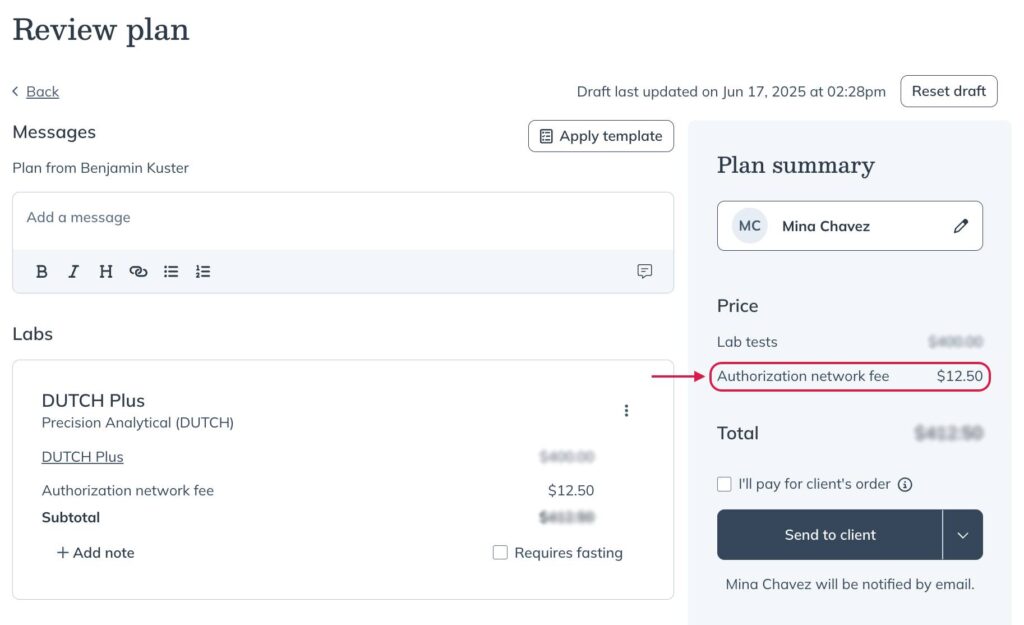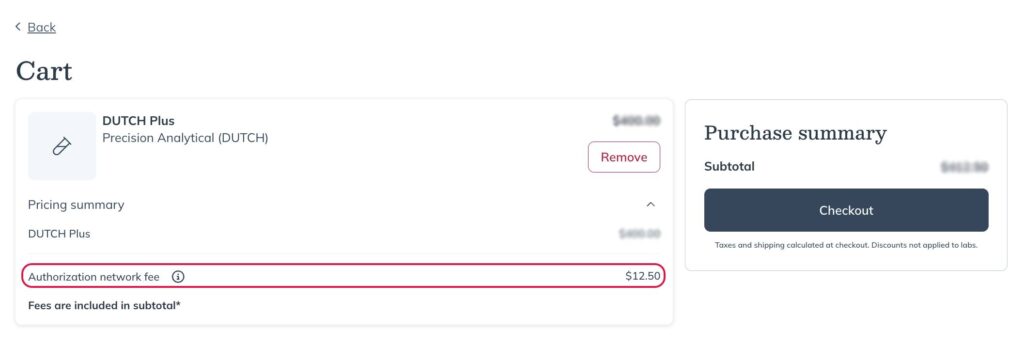Last modified: November 26, 2025
Authorization Network
Providers
The authorization network helps providers with limited ordering access recommend lab testing while staying connected to their patient’s care journey. Recommendations are reviewed and ordered by a licensed clinician so you can recommend testing while remaining within your scope.
This guide explains how the authorization network works and when it applies to practitioners with limited ordering access.
Who uses the authorization network
You may need to use the authorization network to recommend testing based on your ordering access. Ordering access is determined by each lab company based on your state, license, and NPI number.
- Authorized providers with full ordering access can order any test from the catalog.
- Providers with limited ordering access can recommend testing through the authorization network from a curated catalog of available tests.
How the authorization network works
The authorization network helps with:
| Recommending tests from a curated catalog | Choose tests from a curated menu available to providers with limited ordering access. You can learn how to recommend testing in Sending a lab test recommendation. |
| Patient payment | Patients receive an email with their recommended test(s) and pay for them, along with a $12.50 authorization network fee per test or panel. |
| Testing review and approval | Licensed clinicians from the authorization network review and approve testing recommendations. These clinicians are independent and may approve or deny requests based on clinical appropriateness. If approved, they’ll also review results and contact patients if any critical results are found. |
| Accessing results | Once results are ready, you, your patient, and the authorization network clinician will all have access. You’ll receive an email as soon as results are ready. |
| Patient notification | After you review and share results, your patient will be notified by email. Results can be shared directly from your Fullscript account. |
Clinical consultations
Providers using the authorization network are not eligible for clinical consultations with our lab partners. Only providers with full ordering access can book these one-on-one sessions. If you’re using the authorization network, you’ll need to rely on other educational resources instead of direct consults with the labs.
Critical lab results
If your patient’s lab results are flagged as critical, as defined by the lab company, the clinical team at the authorization network will attempt to reach your patient by phone (up to three times) to advise on the appropriate next steps for their care. If the clinical team is unsuccessful in contacting the patient by phone, a letter will be mailed to ensure they are directly notified of the critical results.
The authorization network clinical team will not provide diagnoses or treatment recommendations. Patients will be encouraged to follow up with their provider.
Authorization network fee
There’s a $12.50 fee per test or panel when using the authorization network. This fee is typically paid by the patient, depending on the billing method you’ve selected.
The $12.50 fee covers:
- Review and approval by a licensed clinician.
- Monitoring of critical results.
- Patient notification if results are flagged.
This fee will be visible in the Review plan page before you publish a plan containing a lab recommendation.

The fee appears as a separate line item in the patient’s cart, separate from the cost of testing.

Catalog access
Providers with limited ordering access can recommend tests from a curated catalog reviewed by our authorization network partner. These options focus on wellness markers like nutrient levels, hormones, digestion, and food sensitivities. Tests used to help diagnose serious conditions (e.g., cancer) aren’t included. The catalog was built to deliver meaningful insights into your patient’s health.